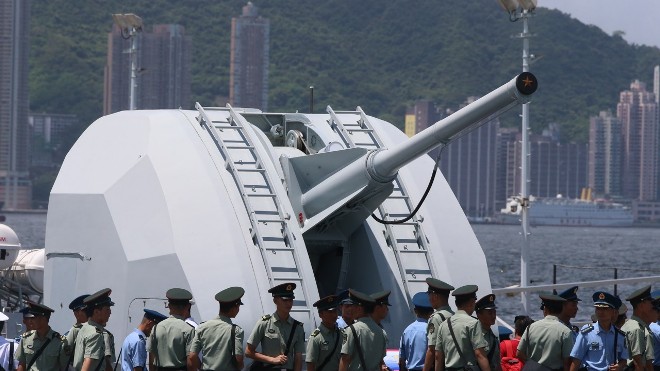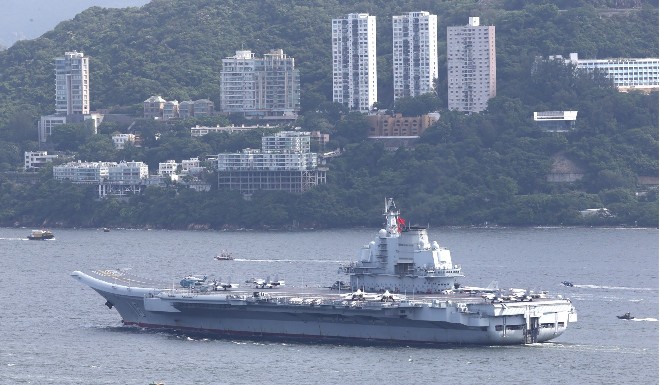
Saturday October 14, 2017

The sight of Chinese warships, loaded with an astonishing arsenal of weapons, sailing along the Thames and docking in Canary Wharf, London’s bustling financial hub, has caught the attention of global media.
The port call last week was part of a goodwill exercise that has taken the Chinese fleet across the world.
The 26th Chinese Navy Escort, composing of two missile frigates and one replenishment ship, arrived in London fresh from port visits to Belgium, the Netherlands and Denmark. And before its European stops, the escort had completed a four-month mission in the Gulf of Aden and Somali waters.
The operations were a showcase of Chinese military diplomacy, aimed at highlighting China’s mounting capabilities and its efforts to become a global maritime power.
Until recently, the primary mission of the People’s Liberation Army Navy was inshore defence. Now, it is stepping up military exchanges, paying port visits abroad, and conducting joint drills with foreign navies.
At the Communist Party’s 18th congress in 2012, the leadership took on board the ideas of Alfred Thayer Mahan to declare China’s ambition to “build itself into a maritime power”. Taking its lead from the 19th century US historian’s doctrine, which views naval power as the means to ensure commercial, political and military access to vital regions, China has been transforming its navy with investments in hardware and changes in strategy aimed at turning it from a brown-water force into a blue-water one.
Nowadays, Chinese warships plough through the East and South China Sea s, where China is engaged in territorial disputes with neighbours and debates regarding freedom of navigation with the United States and its allies.
The first open-sea exercise of the Liaoning, China’s sole aircraft carrier, was a milestone in the history of for the nation’s navy, which has a history more of humiliation than glory. And Chinese ships have taken part in humanitarian and security operations in recent years, earning international praise.

China’s Liaoning aircraft carrier enters Hong Kong waters. Photo: Felix Wong
With its constantly expanding interests overseas, China has also made huge investments in expanding the navy’s global reach, aimed at gaining access to multiple ports in the Atlantic, Pacific and Indian Oceans. A global network of logistical support is crucial for any blue-water fleet. In 2015, China announced plans to establish its first overseas military outpost in Djibouti.
With the construction of the country’s first domestically built aircraft carrier nearing completion – and more carriers under construction – China will soon have the world’s second-most powerful navy, after the US, in terms of hardware. Even so, compared to the US navy in terms of global reach, the PLA has a long way to go. As the largest operator of military bases abroad, the US has servicemen in around 800 bases in about 80 foreign countries.
The PLA is a newcomer on the high seas, which have been dominated by Western powers ever since the rise of the Portuguese in the 15th century.
Perhaps the increase in Chinese naval activities symbolises a new era of Chinese participation in naval and maritime history. However, China’s high-profile military forays into faraway lands and waters have not only prompted much analysis of China’s growing military clout. They have also triggered widespread fear regarding its military ambitions at a time Beijing has been at pains to convince the world of its intentions of a peaceful rise. Apparently, when it comes to military diplomacy, China still has some homework to do.